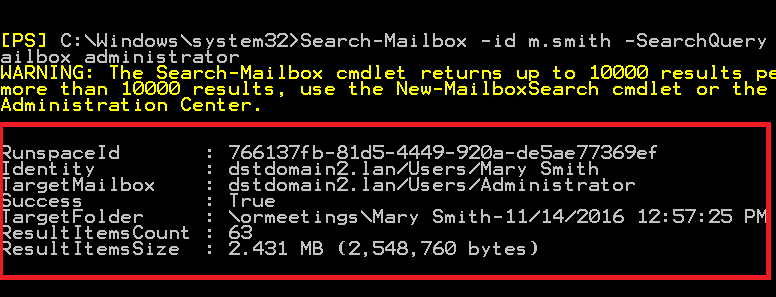
In the middle pane, under the Database Managementtab, select a database.Open Exchange Management Console (EMC).To remove an active database you must first remove all copies from other servers.įirst, we need to remove all passive copies of each database. However, if you try to remove the database you may receive the following error.Įrror: Database has multiple copies on other servers. Now that you have confirmed you have no objects pointing to 2010 you can remove them. It will output a table of all requests and their current status.

To monitor the move progress use the Get-MoveRequestcmdlet. C:\> Get-Mailbox DiscoverySearch* | fl name,database C:\> Get-Mailbox DiscoverySearch* | New-MoveRequest -TargetDatabase "Ex2013_db" Repeat this process for the Discovery Search Mailbox. C:\> Get-Mailbox -Database "Ex2010_db" -Arbitration | fl name,database C:\> Get-Mailbox -Database "Ex2010_db" -Arbitration | New-MoveRequest -TargetDatabase "Ex2013_db" Repeat this process for Arbitration mailboxes as well. C:\> Get-Mailbox -Database "Ex2010_db" -Archive | New-MoveRequest -TargetDatabase "Ex2013_db"

If any exist you can move them with the following command. C:\> Get-Mailbox -Database "Ex2010_db" -Archive | fl name,database To check a specific database issue the following command.
#Search mailbox exchange 2010 archive#
The easiest way to do this is PowerShell.įirst, let’s check no archive mailboxes were left behind. So, what’s first? Verify databases are emptyīefore we can delete a database we need to check that no objects are homed to 2010 anymore. That you are ready to delete your 2010 DAG. That you have migrated and removed all Public Folder content. This article is for the organization that has migrated to Exchange 2013. It assumes you have successfully moved all user, shared & resource mailboxes. And I always recommend putting them in place. Don’t forget to follow us and share this article.Why would I ever want to decommission them? Then we can give the right command in PowerShell to export the 2010 mailboxes to a text file.ĭid you enjoy this article? You may also like Outlook not connecting to Exchange after migration. After that, we have to get the Exchange 2010 user mailboxes on that particular version. To sum it up, the first step is to get the Exchange Servers version. Keep reading: Move arbitration mailboxes in Exchange Server » Thoughts C:\>Get-Mailbox -Resultsize Unlimited | Where | Select Name,AdminDisplayVersion | Out-File C:\output\2010_mailbox_users.txt -Encoding Unicode Get a list of all the exchange 2010 user mailboxes that are on the Exchange Server version 14.3. These product names are Exchange Server 2010 SP3. The Exchange Servers in this organization that we identified are Version 14.3 (Build 123.4). What you are looking for is the version and build number. Have a look at the Microsoft website to identify your Exchange Server. C:\>Get-ExchangeServer | Select Name,AdminDisplayVersionĮX02 Version 15.1 (Build 1847.3) Identify your Exchange version Get a list of the Exchange Servers, including the version in a table view. Two Exchange Servers are running Version 15.1 (Build 1847.3). Four Exchange Servers are running Version 14.3 (Build 123.4). There are six Exchange Servers in the organization. Site : exoio.local/Configuration/Sites/SiteBĪdminDisplayVersion : Version 15.1 (Build 1847.3) Site : exoip.local/Configuration/Sites/SiteB

Site : exoip.local/Configuration/Sites/SiteAĪdminDisplayVersion : Version 14.3 (Build 123.4) C:\>Get-ExchangeServer | Format-List Name,Domain,Edition,Fqdn,ServerRole,Site,AdminDisplayVersion Run Exchange Management Shell as administrator. In particular, the one you need is the Exchange 2010 Server. Get Exchange 2010 version and build numberįirst, you need to know the Exchange Server versions in the organization.


 0 kommentar(er)
0 kommentar(er)
